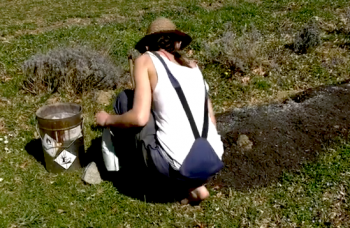A taste of Circularity: Meet Plug-N-Harvest Project

Learn about how the EU-funded project Plug-N-Harvest contributes to the green transition of buildings through circular smart solar façade solutions.
Plug-N-Harvest is an EU – Funded project that started in September 2017 and concluded at the end of 2022.
We chatted with the project coordinator, Iakovos Michailidis from the Centre of Research and Technology Hellas, about the goals of this project for the circular economy in the building sector and the importance of data in the ecological transition.
Let’s go!
Hello, Iakovos! Give us an overview of the Plug-N-Harvest project! Which cities are involved? What are their roles?
Hello, Houseful team! First of all, thanks a lot for this chat! Regarding the public administration partners (city or regional authorities), 2 out of the 4 pilot cases consider one public building and a managed-by-public-authorities building, and both have been renovated accordingly. The first one is a single-family building, from a social housing agency managed by Cardiff City Council in Wales; the second case considers a tertiary office building in Grevena, which is managed by the Region of Western Macedonia authorities in north-west Greece.
In the broader framework of the Green New Deal, how does Plug-N-Harvest contribute to the implementation of the circular economy action plan?
One of the main pillars of the project is the life cycle analysis and assessment of the renovation solution developed. The Adaptable and Dynamic Building Envelope (ADBE) considered was designed according to component reusability and material recyclability principles in an attempt to maximize its circularity potential, achieving a reusability score of almost 23% of its components.
What are the most promising innovative technological solutions developed so far to incorporate circularity principles in the demo sites?
The entire ADBE construction is based on aluminum and partially recycled aluminum, rendering over 99% of its components fully recyclable. Of course, specific structural properties of the aluminum profile have been carefully considered to ensure its resilience against heavy vertical and side loads.
Moreover, prefabricated aluminum panels can be dyed for aesthetic reasons and easily made to look like tiling across the ADBE façade. They could even be dismantled and repurposed. This ensures Plug-N-Harvest’s high reusability and circularity levels.
Why is “data” important in your project?
The Plug-N-Harvest solution does not only consider the structural part where the active ADBE facade is involved. The idea of the project is to install and then increase the buildings’ thermal and energy-harvesting capacity. At the same time, it seeks to exploit the full potential of controllable microgrid loads via a complete set of digital tools:
- building automation connectivity based on common protocols and standardized protocols (e.g., Z-WAVE)
- secure communication through CP-ABE encryption,
- an interoperable building management system (BMS) [Mark4] and data modelling based on FIWARE NGSI,
- machine-learning and statistics-based data curation based on faults detection and mitigation,
- demand response and flexibility forecasting to proactively assess flexibility requests,
- an intelligent management and control system for building energy management which is responsible for making the final control decisions for each integrated load within the micro-grid.
As a result, real-time building sensory data for closed-loop control as well as historic data for training and performance benchmarking are more than critical, not only for evaluating but also for operating the holistic Plug-N-Harvest solution.
Did you replicate anything? If so, where and when?
No. No replication studies (desk research) analysis were considered within the project; mainly because the 4 pilot cases were quite different from each other, presenting a large variety in terms of size, energy requirements, type of use, implementation costs, regulations, etc. So, in the end, the conclusions and experiences from 4 different pilot cases, as described here, may serve as a real-life replicability study themselves.
Thanks a lot for your time spent with us, Iakovos! And good luck to the Consortium for this project!



